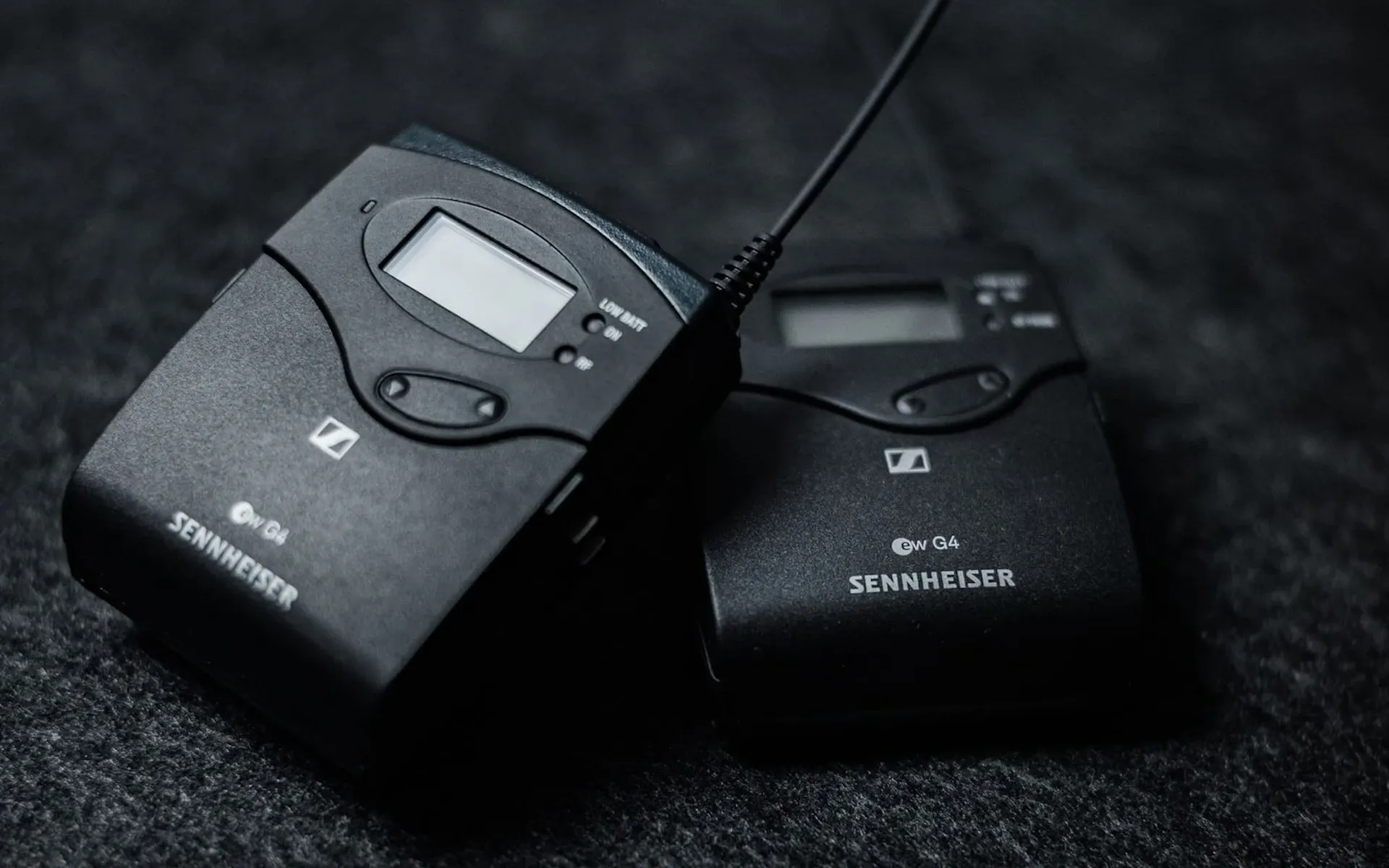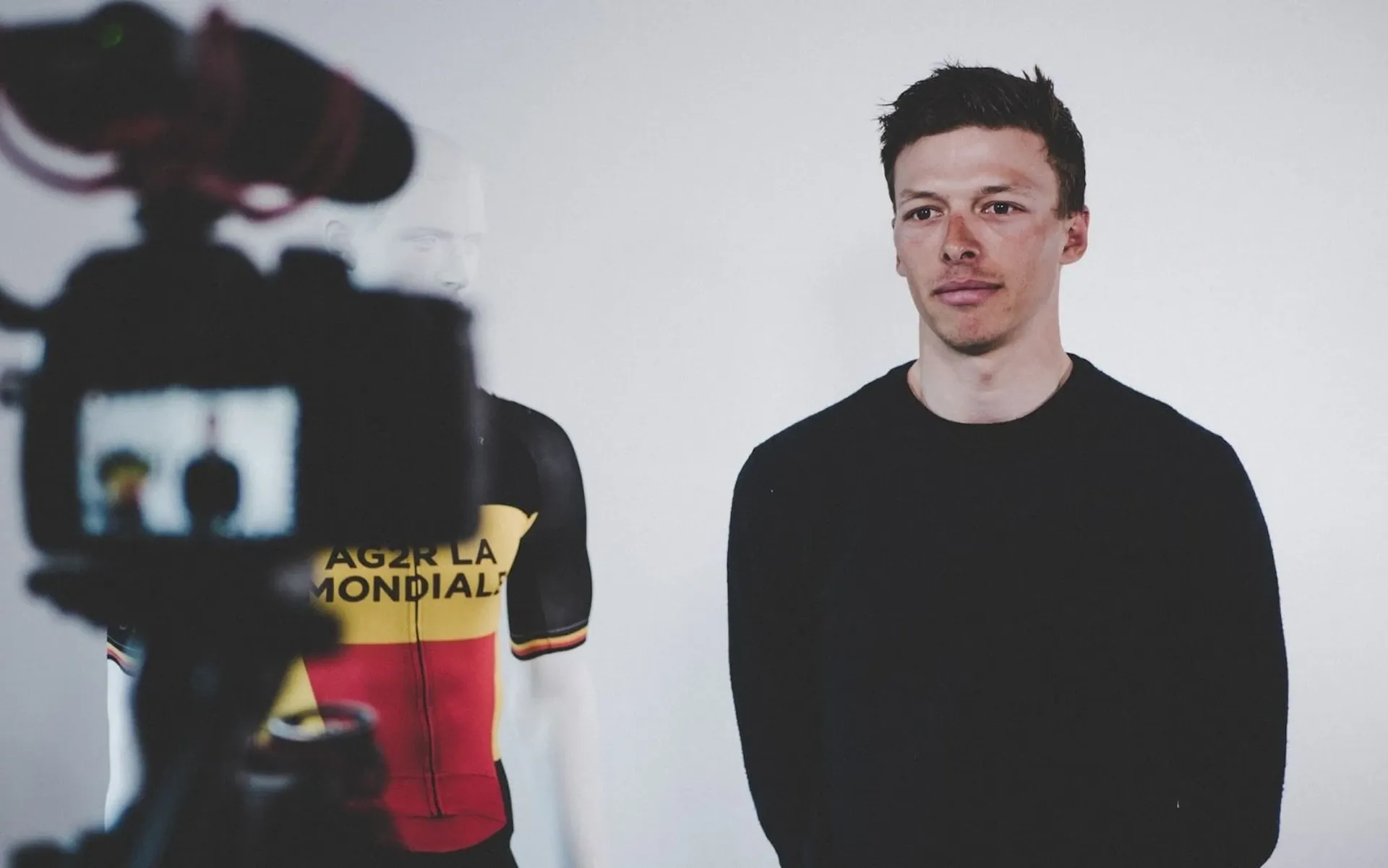Your guide to lavalier microphones
When it comes to audio gear, there’s so much choice out there. One option is the lavalier microphone, or the ‘lav mic.’ In this guide, we’ll explain what a lavalier microphone is, what it does, who it’s for, and what the best kit for the job is.

When it comes to audio gear, there’s so much choice out there. One option is the lavalier microphone, or the ‘lav mic.’ In this guide, we’ll explain what a lavalier microphone is, what it does, who it’s for, and what the best kit for the job is.
What is a lavalier microphone?
You might have heard of a lavalier microphone before, perhaps under a different name. To break down the actual name, ‘lavalier’ is a fancy way of saying ‘pendant.’ So, it’s a pendant microphone... kind of. It’s placed around the neck area, specifically for dialogue.
It’s one of those tiny mics you’ll most likely see in reality TV, theater, documentaries, social media, and news shows (and in spy movies!), often clipped to the user’s breast pocket or lapel. You might hear it referred to as a ‘lapel mic,’ ‘body mic,’ ‘personal mic,’ ‘lapel collar mic,’ or something similar.

What does a lavalier microphone do, and why should I use one?
As mentioned just now, lavalier microphones are typically used by people on-screen or on-stage, where they need both of their hands. It’s a small, discreet mic that comes in both wired and wireless options.
The mic runs down to a radio frequency transmitter pack if it’s wireless, usually connected to the user’s back pocket or waist. The signal travels directly to a receiver, which means you can adjust the sound just like the output from a regular handheld mic.
Wired options have become more agile and practical, too. The big dogs like RØDE, Shure, and Audio-Technica have all produced wired models that hook up directly to your smartphone, tablet, or mixing console.
Lavalier microphones have either cardioid or omnidirectional pickup patterns. If you don’t know what that means, we’ll break it down for you!
- Cardioid lavalier mics are one-directional. They have a clear front and back when picking up sound, so they must point directly towards the user’s mouth. They’re great for ‘static’ or ‘studio’ situations, where the speaker is relatively still; this can include scenarios like news broadcasts or lectures. The one-way pickup means that background noises (rowdy students, for example!) are filtered out.
- Omnidirectional lavalier microphones pick up sound from all directions, making them handy for on-the-move recording. This means they’re more susceptible to background noise but also give you the chance to be flexible with placement – clipping the mic to your hat, glasses, or even your hair is worth trying with an omnidirectional lavalier microphone.
Lavalier microphones are popular with content creators because they allow more movement. If you’re looking for some top-quality music to accompany your lav-ing, we got you covered.

What are the disadvantages of using a lavalier microphone?
No mic is perfect, and lavalier microphones do have their downsides. For one, they can be restrictive when it comes to ad-hoc recordings, given they’re attached to your body. If you’re filming off-the-cuff content on the street, politely asking someone to fix a lav mic before speaking just doesn’t have the same impact as going up to them with a handheld or shotgun mic.

The other problem is you – sorry! Lavalier microphones can be notoriously fiddly, and any disturbance or rubbing can be pretty disruptive to your recording. Unless you’re a pro and have worked with lavalier microphones for a while, you’ll probably run into some ‘shirt noise’ here and there. They’re also primarily battery-powered, so they must be fully charged to avoid any embarrassing power cuts.
What’s the best lavalier microphone for you?
Now you know the basics, here are three popular options to kick-start your hunt for the lavalier microphone that suits you most.
- Movo WMIC50: This wireless beauty can last four hours on AAA batteries, stretch 150 feet from your audio receiver, and includes a one-way headphone to monitor your audio live. The WMIC50 works with all camcorders, DSLR cameras, and mirrorless cameras with an external audio jack, and you can pick one up for eighty bucks. A perfect lavalier microphone for learning the basics! Check it out here.
- RØDE smartLav+: The ultimate lavalier microphone for iPhones. It’s a broadcast-grade omnidirectional mic, plugs straight into your smartphone’s headphone jack, and is super durable thanks to its Kevlar-reinforced cable. The smartLav+ is Android compatible but works best with Apple, thanks to the iOS-exclusive RØDE Rec app. Read more about it here.
- Audio-Technica PRO70: This wired mic excels with instruments like acoustic guitars, but it’s also great for interviews thanks to its cardioid pickup, which isolates noise from the back and sides. It also runs on batteries or phantom power, so you can use it in your studio set-up or on the move. Head here to learn more.
Once you’re all set to record some premium audio, how about sorting the soundtrack?
Our catalog is high-quality, affordable, and safe. An Epidemic Sound subscription goes beyond royalty-free music, removing the headache of licensing and freeing you up to do what you do best. You can enjoy the safety of our license hand-in-hand with our massive catalog of 50,000 tracks, covering just about every genre you can think of. You’ll also gain unlimited access to our advanced search functions — finding the right sound’s never been easier.
It’s better than royalty-free. It’s worry-free. Get started with Epidemic Sound below.

Related posts:

